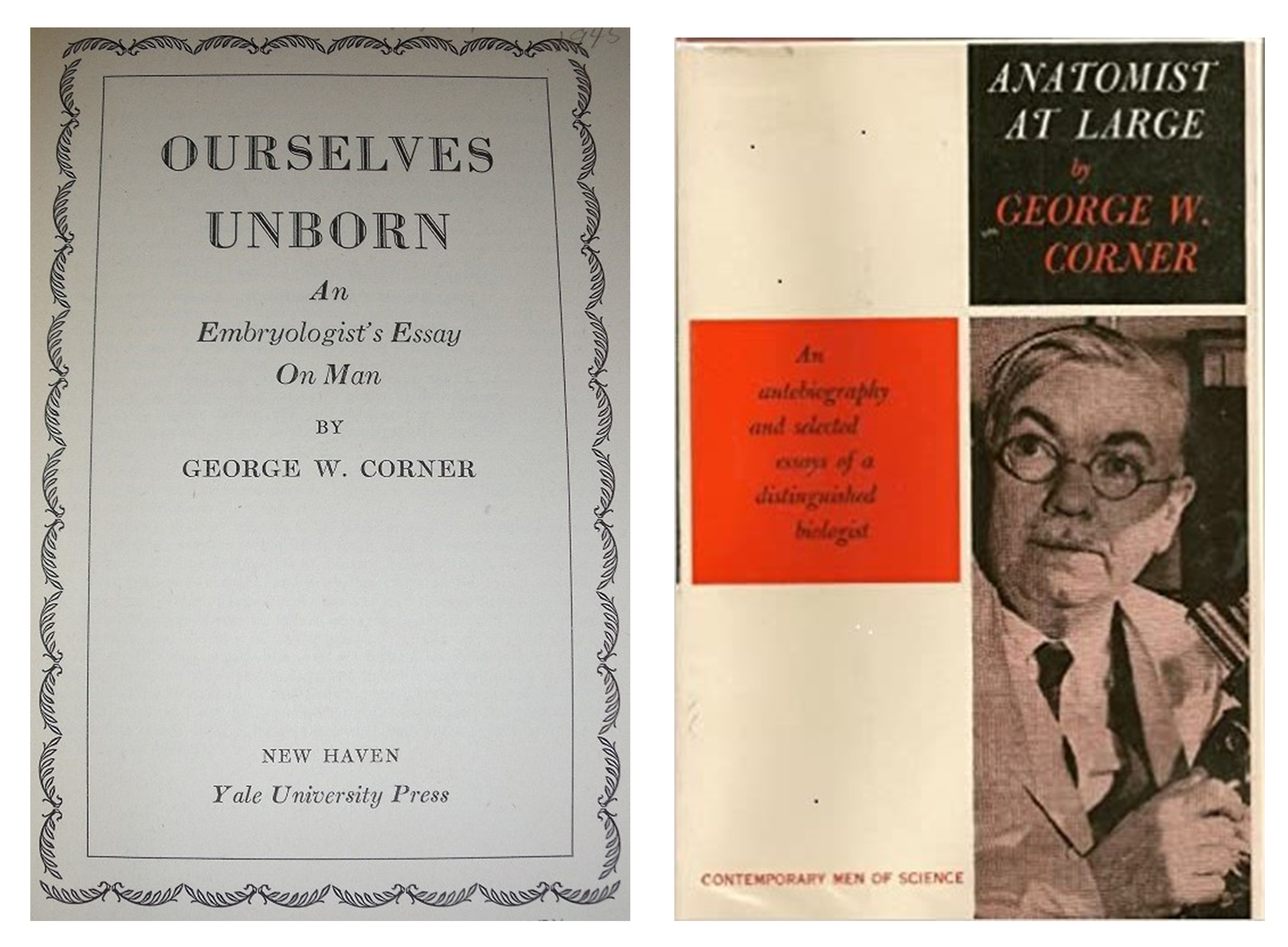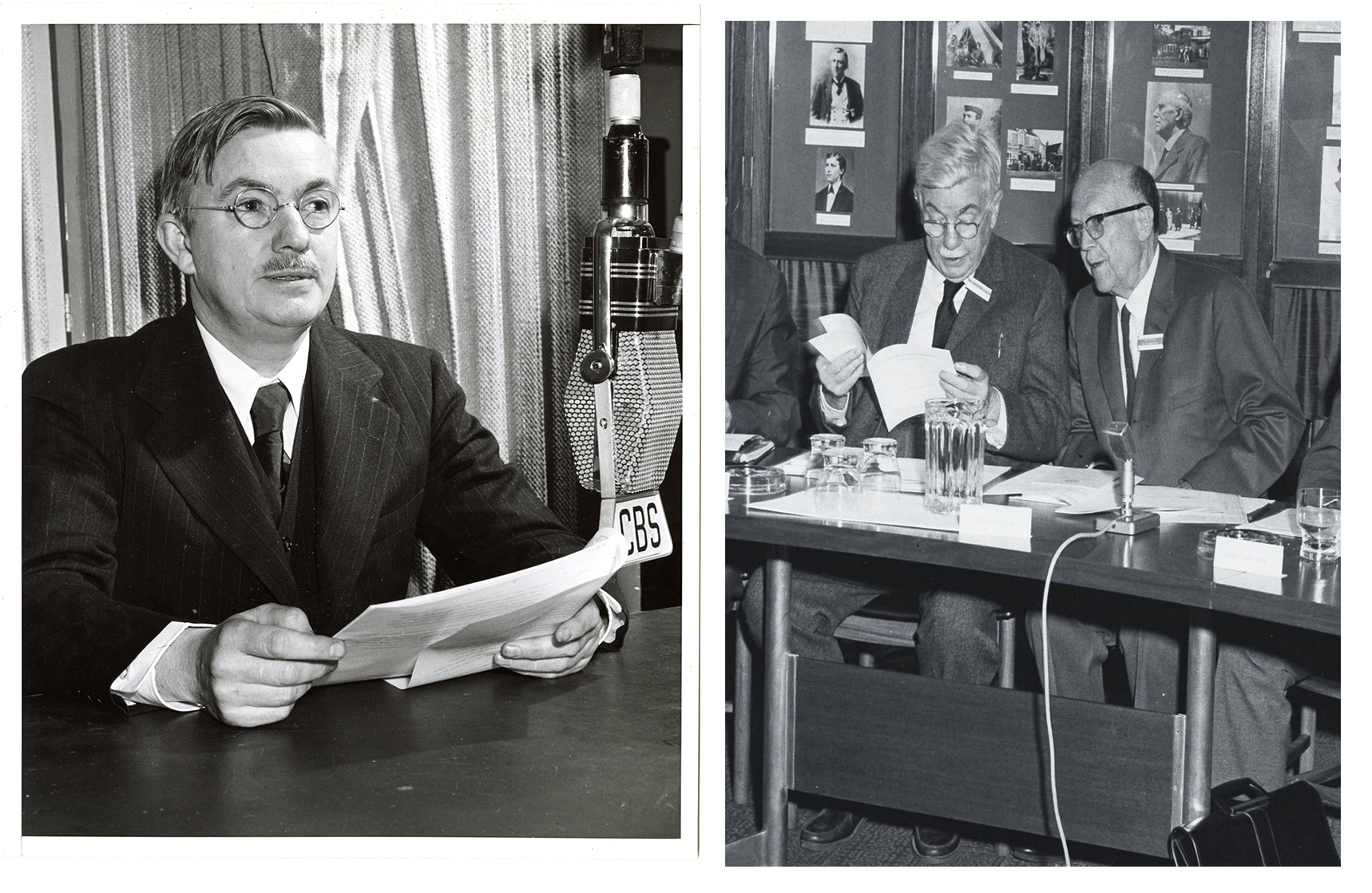Anatomist at Large: George Washington Corner
George Washington Corner (1889–1981) was an American physician, anatomist, endocrinologist, embryologist, historian, and author. He is best known for his contributions to reproductive science, especially his work in discovering the hormone progesterone, which led to the development of oral contraceptives. In addition to these accomplishments, Corner earned a special place at the American Philosophical Society (APS) and served as an Executive Officer from 1960 to 1977. I’ve had the privilege to process his personal papers and administrative records at the Society, and am pleased to share a brief sketch of this distinguished scientist, administrator, and scholar.
Corner was born on December 12, 1889, the son of Baltimore merchant George Washington Corner II and Florence Evans. He attended the Baltimore Boys Latin School and initially majored in classics at Johns Hopkins University; he maintained an interest in history and humanism throughout his lifetime. However, Corner was also introduced to scientific subjects through his relatives, such as veterinary medicine and surgery. These formative experiences, along with an internship at the US Fisheries Laboratory, ultimately influenced his career choice. Corner earned a medical degree in 1913 and volunteered at the Grenfell Medical Mission in Battle Harbor, Labrador as a medical assistant. During one of his summers at the mission, Corner met a fellow volunteer, Betsy Lyon Copping, and they were married in1915. They had a son and daughter, for whom Corner wrote the books, Attaining Manhood and Attaining Womanhood, which were later published for young people entering puberty.
After his medical training, Corner pursued an academic path and taught from 1915 to 1919 as an Assistant Professor at the University of California, Berkeley. He also conducted research on the corpus luteum. This is a cellular mass created in the ovary during early pregnancy; it produces progesterone and is the hormonal basis of menstruation (see below). Both of these topics would inform his later work in anatomy and female reproductive health. Corner then returned to Johns Hopkins to teach from 1919 to 1923.

The next step in Corner's career was a professorship at the University of Rochester. He was hired by George H. Whipple, a former Johns Hopkins professor who had become Dean of Rochester's new school of medicine. Corner’s position was funded by George Eastman and the Rockefeller Foundation. As the medical school’s first professor of anatomy, Corner served from 1923 to 1940.
In 1940, Corner became the third director of the Carnegie Institution of Washington's Department of Embryology, where he worked until 1955. He was awarded the Dwight H. Terry Lectureship in 1943 for his book on embryology, Ourselves Unborn (see below).

His research during this period focused on the role of hormones in the female reproductive system. While collaborating with American gynecologist Willard Myron Allen, they were able to identify progesterone, a hormone which ultimately became a key ingredient in oral contraceptives.
Their findings led to the development of birth control pills, which usually contain some degree of synthetic progesterone and estrogen to prevent ovulation. As a result of their work together, two medical terms were named for the physicians: the Corner-Allen Test, which measures progestational activity, and the Corner-Allen Unit, which is the amount of progesterone required to produce hormonal changes in female rabbits (i.e. an early detection method for human pregnancy).
Given Corner's contributions to science, he was elected to the APS and National Academy of Sciences in 1940. He was made an Honorary Fellow of the Royal Society of Edinburgh in 1951, and a Fellow of the Royal Society of London in 1955. He wrote his first autobiography, Anatomist at Large in 1958 (see above), and served as historian of the Rockefeller Institute from 1956 to 1960. Shortly thereafter, Corner served as Executive Officer of the APS from 1960 to 1977. Given his interest in medical and scientific history, Corner worked closely with the Society’s Librarians, including Richard Shryock.

Regarding his legacy in the field, Corner mentored a generation of up and coming sex experts, such as Alan Frank Guttmacher, an international leader in the family planning movement, and William H. Masters, founder and head of the Masters and Johnson Institute. In particular, Mary Steichen Calderone, founder and president of the Sex Information Education Council of the United States, credited Corner for allowing her to attend anatomy classes at the University of Rochester.
In this light, Corner could possibly be seen as the "grandfather" of sex education, family planning, and contraception in America. He produced an important body of scientific evidence, which served as a bridge between the conservative viewpoints of the first half of the 20th century, with the rapidly changing social mores of the latter part. Most importantly, he contributed "tolerance and understanding gained through the study of natural human needs."

His son, George Washington Corner, IV, followed in his father's footsteps and was a professor of obstetrics and gynecology at the University of Alabama. The elder Corner was at his son's home when he died in Huntsville on September 28, 1981, shortly after completing his second autobiography, The Seven Ages of a Medical Scientist. He was thus eulogized in The New York Times:
"Dr. Corner's career embraced teaching, writing and administration as well as research in anatomy and embryology, which brought him worldwide recognition. In 1965, upon awarding him his tenth honorary degree, the University of Pennsylvania said that Dr. Corner, 'Has shown an astonishing facility in the mastering of several metiers; a renowned scientist, he is also an accomplished humanist.'"


